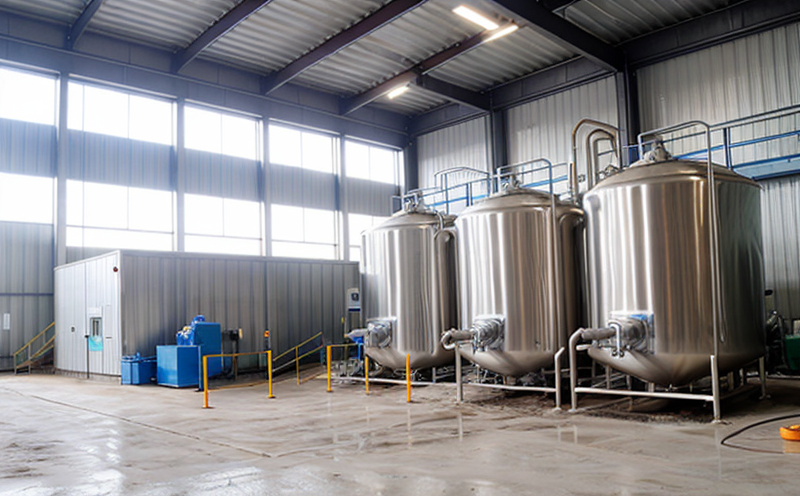ASTM D8025 Microplastics Test in Industrial Water
The ASTM D8025 standard method is a critical tool for detecting and quantifying microplastics in industrial water systems. This test provides quality managers, compliance officers, R&D engineers, and procurement teams with the means to ensure their processes are not only sustainable but also compliant with environmental regulations.
Microplastics, defined as plastic particles smaller than 5 millimeters, have become a significant concern due to their widespread presence in water systems. These tiny fragments can originate from various sources such as breakdown of larger pieces of plastic, synthetic fibers, and industrial by-products. In industrial settings, microplastics not only affect water quality but also pose potential risks to the environment and human health.
The ASTM D8025 method leverages advanced analytical techniques to detect these microplastics in complex matrixes such as industrial process waters. It involves a series of steps that include sampling, concentration using filtration or centrifugation, identification via microscopy, and quantification through spectroscopic methods like FTIR (Fourier Transform Infrared) analysis.
The primary apparatus used includes
- High-capacity centrifuges
- Ultrafiltration membranes
- Spectroscopic instruments such as FTIR
The process starts with sampling a representative portion of the industrial water stream. This sample is then filtered or concentrated to enhance the visibility of microplastics under microscopic examination. Microscopic identification involves examining the particles using high-resolution imaging techniques. Once identified, these particles are further analyzed for their chemical composition and physical properties.
ASTM D8025 testing provides invaluable insights into the sources and concentrations of microplastics in industrial water systems. This information is crucial for process optimization, regulatory compliance, and environmental stewardship. By identifying the types and quantities of microplastics present, businesses can take proactive measures to mitigate their presence and impact.
Quality managers benefit from ASTM D8025 testing as it helps them maintain consistent product quality by ensuring that industrial water does not introduce contaminants. Compliance officers use this test to verify adherence to environmental regulations and standards, such as ISO 14001 for sustainability management systems. R&D engineers can leverage the results of ASTM D8025 tests to develop new processes or modify existing ones to reduce microplastic emissions.
Frequently Asked Questions
Use Cases and Application Examples
| Scenario | Description |
|---|---|
| Industrial Cooling Towers | The ASTM D8025 method is used to monitor the presence of microplastics in cooling tower water, ensuring that they do not affect heat transfer efficiency or contaminate the surrounding environment. |
| Petrochemical Plants | This test helps identify and quantify microplastics from petrochemical by-products, aiding in process optimization and waste management. |
| Pharmaceutical Manufacturing | In pharmaceutical settings, ASTM D8025 testing ensures that industrial water used in the manufacturing process does not introduce harmful contaminants into final products.|
| Textile Mills | The detection of microplastics from synthetic fibers helps textile mills comply with stringent environmental standards and reduce pollution. |
Benefits
- Achieves regulatory compliance with international standards such as ISO 14001.
- Enhances product quality by ensuring industrial water does not introduce contaminants.
- Promotes environmental sustainability through reduced microplastic emissions.
- Facilitates process optimization for improved operational efficiency.
Customer Impact and Satisfaction
- Customers can trust the results of ASTM D8025 testing, leading to increased customer satisfaction.
- Better environmental performance leads to positive public perception.
- Increased compliance with regulations enhances business reputation.





